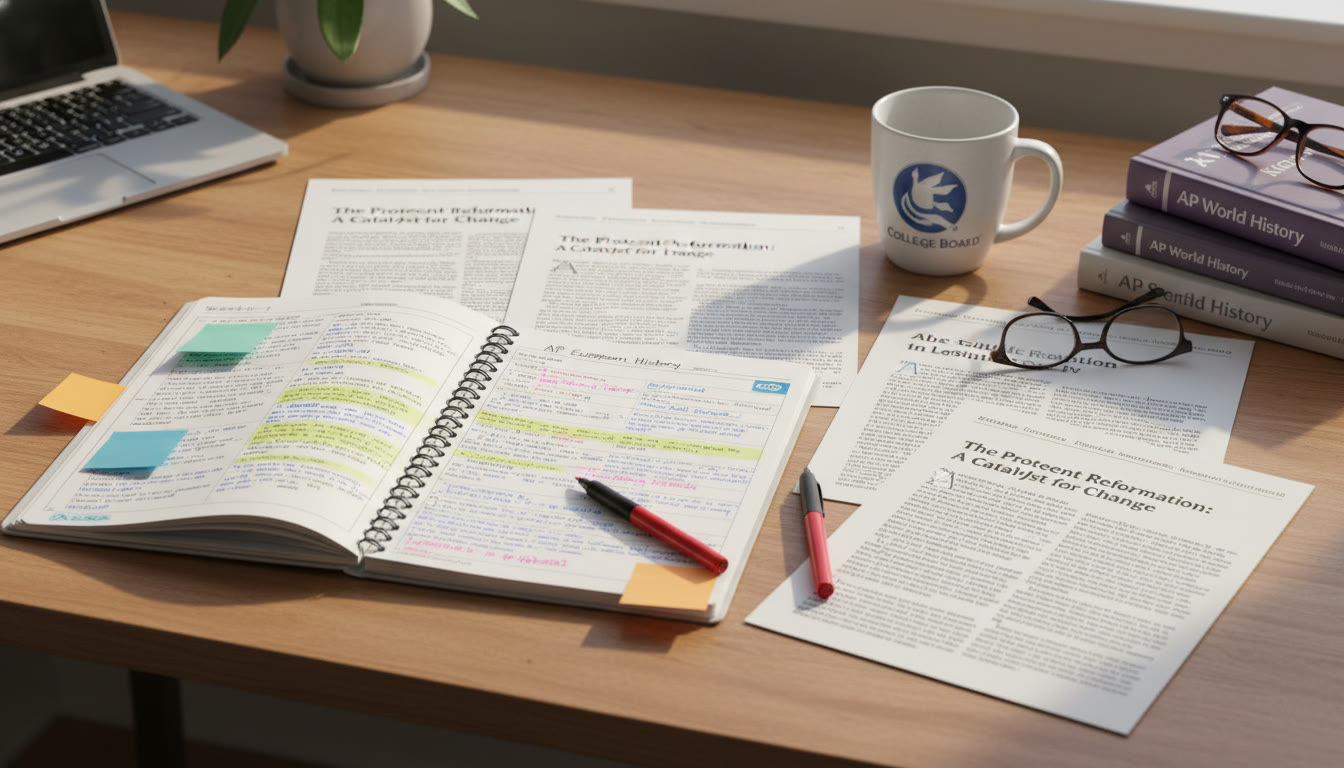Why IB TOK and EE Skills Give You a Running Start in AP Seminar
Parents and students: if you’ve spent time in IB’s Theory of Knowledge (TOK) classrooms or dug into an Extended Essay (EE), you already own powerful tools for AP Seminar. At first glance these programs have different names, rubrics, and even classroom cultures — but underneath they ask the same thing: can you ask sharp questions, evaluate knowledge claims, and build reasoned, evidence-based arguments?
This post is a friendly, practical guide to translating TOK/EE strengths into AP Seminar success — with a special focus on two pillars that matter most in assessments and real-world research: source credibility and the use of lenses. We’ll walk through why each matters, how to practice them, and examples that make the ideas stick. Along the way I’ll mention how targeted 1-on-1 help, tailored study plans, and AI-driven feedback (as offered by services like Sparkl) can sharpen your skills faster — when it’s used as a supplement to thoughtful practice.

What AP Seminar Actually Tests (in Plain English)
AP Seminar asks you to investigate complex topics, evaluate multiple perspectives, and communicate a well-reasoned argument using evidence. You’ll be rated on how well you select and evaluate sources, how thoughtfully you apply different perspectives (lenses), and how clearly you present conclusions and limitations.
Think of it as a blend of critical thinking (TOK-style), independent research (EE-style), and communication. If TOK taught you how knowledge claims are built and challenged, and EE taught you how to plan and execute a sustained research project, AP Seminar pulls those threads together in shorter, scaffolded performance tasks and a final team project.
Part 1 — Source Credibility: Not All Evidence Is Created Equal
Why Source Credibility Matters
In AP Seminar, your argument is only as strong as your evidence. Credible sources boost your claims; unreliable sources undermine them. Examiners look for deliberate selection and evaluation — not just a list of references. They want to see that you can separate a persuasive opinion piece from a well-designed empirical study, and that you can explain why the difference matters.
The Fast Checklist for Evaluating Sources
- Authority: Who wrote it? What are their credentials and affiliations?
- Accuracy: Is the information supported by data, references, or verifiable facts?
- Purpose/Intended Audience: Is the piece meant to inform, persuade, sell, or entertain?
- Currency: When was it published or updated, and does that matter for the topic?
- Methodology: If it’s a study, was the method appropriate and transparent?
- Bias and Perspective: What perspective does the source represent, and how might that shape the evidence?
Use this checklist like a mental rubric when you scan an article. Over time it becomes second nature — the way an experienced TOK student automatically questions the assumptions behind a knowledge claim.
Examples: Evaluating Two Sources Side-by-Side
Imagine you’re researching the impact of social media on teen sleep. Which would you trust more?
- A short opinion piece in a popular magazine: “Why Screens Are Destroying Teen Sleep” with no citations.
- A peer-reviewed study in a sleep medicine journal with clear methods, sample size, and statistical analysis.
The second source is more credible. But that doesn’t mean the first is useless — it may show public narratives or anecdotal evidence, which can still be valuable when you analyze perspective and rhetoric. Good AP Seminar responses don’t discard weaker sources; they contextualize them.
Part 2 — Lenses: Framing Your Inquiry in Productive Ways
What Is a Lens?
A lens is a conceptual filter — a way of looking at a topic that highlights certain features and hides others. Lenses can be disciplinary (psychological, historical, economic), methodological (qualitative vs. quantitative), ethical, cultural, or theoretical (e.g., feminist, utilitarian). In TOK you learn to identify how lenses shape knowledge; in AP Seminar you use lenses to structure analysis and to present balanced perspectives.
Why Lenses Matter in AP Seminar
AP Seminar rewards nuanced thinking. Applying multiple lenses shows you understand complexity: how one set of evidence might look decisive under one lens but less convincing under another. It helps you avoid simplistic conclusions and strengthens your argument by acknowledging limits and trade-offs.
How to Choose and Apply Lenses (A Practical Approach)
- Start with your research question. Which lenses naturally connect to it? If your question involves policy, an economic lens is sensible; if it involves identity, cultural or sociological lenses may be better.
- Limit yourself to 2–3 complementary lenses. Too many lenses can scatter your analysis; too few can feel one-sided.
- Use lenses to structure paragraphs: introduce the lens, summarize the evidence, analyze how the lens interprets the evidence, then evaluate strengths and weaknesses.
- Always conclude with synthesis: what do the lenses, taken together, reveal about your question — and what remains uncertain?
Practical Example: “Does Remote Learning Help or Hurt High School Students?”
We’ll apply two lenses — an educational psychology lens and an equity lens — to show how lenses change interpretation.
| Lens | Key Questions | Evidence Types | What It Highlights |
|---|---|---|---|
| Educational Psychology | How do learning environments affect attention, motivation, and retention? | Controlled studies, cognitive load research, surveys of student engagement | Individual learning outcomes, attention spans, effectiveness of specific instructional designs |
| Equity | Who benefits and who is left behind by remote learning? | Demographic data, access-to-technology statistics, case studies | Access gaps, differential outcomes across socioeconomic lines, digital divide issues |
Under the educational psychology lens, remote learning might look effective when well-structured for self-regulated learners. Under an equity lens, it might reveal widening gaps for students without reliable internet or quiet study spaces. An AP Seminar response would weigh both, explain how each lens uses different evidence, and argue for a cautious, conditional conclusion.
Bringing Source Credibility and Lenses Together: A Short Method
When you combine rigorous source evaluation with purposeful lens use, you get research that feels thoughtful and defensible. Here’s a simple method you can use for every body paragraph in a paper or section of a presentation:
- Claim: Make a short, clear statement related to your thesis.
- Lens: Name the lens you’re applying to this claim.
- Evidence: Present 1–2 carefully chosen sources (use the checklist to justify them).
- Analysis: Explain how the lens interprets the evidence — don’t just summarize.
- Evaluation: Reflect on the limits of the lens and the evidence.
This structure aligns very closely with AP Seminar’s scoring expectations: clarity of claim, use of credible evidence, and thoughtful analysis of perspectives.
Common Pitfalls and How to Avoid Them
Pitfall 1: Treating All Sources as Equal
Fix: Always label sources in your notes (e.g., peer-reviewed, think tank, journalist, blog). When writing, make explicit why you trust a source — or why you’re citing it cautiously.
Pitfall 2: Using Lenses as Buzzwords
Fix: Don’t drop a lens name into a paragraph without showing what it actually changes. Tie the lens to specific evidence and show the interpretive shift.
Pitfall 3: Overcomplicating the Claim
Fix: Keep thesis statements precise and testable. AP Seminar graders appreciate sophistication, but clarity always wins over complexity for its own sake.
How to Practice These Skills Efficiently
- Active Source Annotation: For each article you read, write a one-paragraph credibility note using the checklist. This will save time when assembling citations later.
- Lens Practice Drill: Pick a short article and produce two 150-word analyses under different lenses. Compare how the conclusion shifts.
- Timed Synthesis Exercises: Practice summarizing two contrasting perspectives and delivering a 2-minute synthesis. This helps for oral components and team presentations.
- Peer Review: Swap outlines with classmates and ask them to identify weak evidence or missing lenses.
Sample Outline for an AP Seminar Individual Research Report
| Section | What to Include | Why It Matters |
|---|---|---|
| Introduction | Research question, thesis, quick roadmap | Sets expectations and focus |
| Context/Literature | Key background sources, credibility notes | Shows mastery of the knowledge landscape |
| Analysis (2–3 lenses) | One lens per subsection with evidence and evaluation | Demonstrates depth and perspective-taking |
| Synthesis | Weighted conclusion that reconciles lenses | Shows higher-order reasoning and limits |
| Reflection & Limitation | Discuss what you couldn’t answer and why | Signals intellectual honesty — an AP Seminar plus |
Rubric-Friendly Phrases That Sound Intentional, Not Robotic
- “This source is valuable because…”
- “Viewed through a [lens name] lens, the evidence suggests…”
- “A limitation of this evidence is…”
- “Taken together, these perspectives indicate…”
These phrases map directly to scoring categories: use, analysis, and synthesis.
Where Personalized Tutoring Fits In
Targeted coaching can accelerate the learning loop. If you or your student struggle with picking appropriate lenses, evaluating methodology, or tightening analysis, a tutor can provide model outlines, critique drafts, and give immediate feedback on clarity and evidence selection. Services that offer 1-on-1 guidance, tailored study plans, and AI-driven insights (for example, Sparkl’s personalized tutoring approach) can help identify gaps quickly and create practice that’s specific to the student’s weaknesses — all while building independence and confidence.
Use tutoring strategically: for model feedback sessions, practice presentations, and rubric-aligned revisions. Don’t outsource thinking — use the tutor to amplify skill development.

Putting It All Together: A Short Worked Example
Research question: “Should cities prioritize car-free zones to improve air quality and social life?”
Thesis (sample): Car-free zones can improve urban air quality and pedestrian well-being, but their benefits depend on equitable planning, public transport alternatives, and ongoing community engagement.
Paragraph structure (example):
- Claim: Car-free zones reduce particulate pollution in core districts.
- Lens: Environmental Science — cite a peer-reviewed air-quality study showing particulate reduction.
- Evidence Credibility: The study uses city-level monitoring before and after the intervention, clear methodology, and a robust sample size.
- Analysis: The environmental lens emphasizes measurable health benefits; however, the effect size diminishes if traffic is displaced to adjacent neighborhoods.
- Evaluation: Policy outcomes depend on complementary measures (transit, freight routing). Social and equity lenses would examine who loses or gains access to benefits.
That single paragraph demonstrates credibility assessment, lens application, and honest evaluation — exactly the moves AP Seminar raters reward.
Final Tips for Parents and Students
- Start early with source evaluation. Annotate as you read; don’t leave credibility checks to the last minute.
- Practice lens-switching exercises out loud. Explaining a topic under different lenses clarifies thinking faster than silent notes.
- Schedule regular feedback cycles. A tutor or teacher can save you hours by pointing out recurring weaknesses and suggesting targeted drills.
- Keep a research log. Record why you used each source and which lens it supports — it makes writing smoother and more honest.
- Remember balance. AP Seminar values complexity and nuance; clear, modest conclusions are stronger than overconfident claims without evidence.
Closing Thought: From Knowledge Theory to Persuasive Research
IB’s TOK and EE teach habits of mind that become enormous assets in AP Seminar: curiosity about how we know things, patience with messy evidence, and discipline in building arguments. By pairing rigorous source evaluation with purposeful lens work, you’ll write and present with authority — not just loudness. If you ever want faster, guided progress, personalized tutoring (including 1-on-1 guidance, tailored study plans, and AI-informed practice) can be a valuable accelerator, especially when used alongside the deliberate practice described here.
Practice the checklist, choose lenses with intention, and treat every source as an argument to be interrogated. Do that and you’ll do more than earn a score — you’ll learn a reliable way to think that lasts far beyond any exam.

















No Comments
Leave a comment Cancel